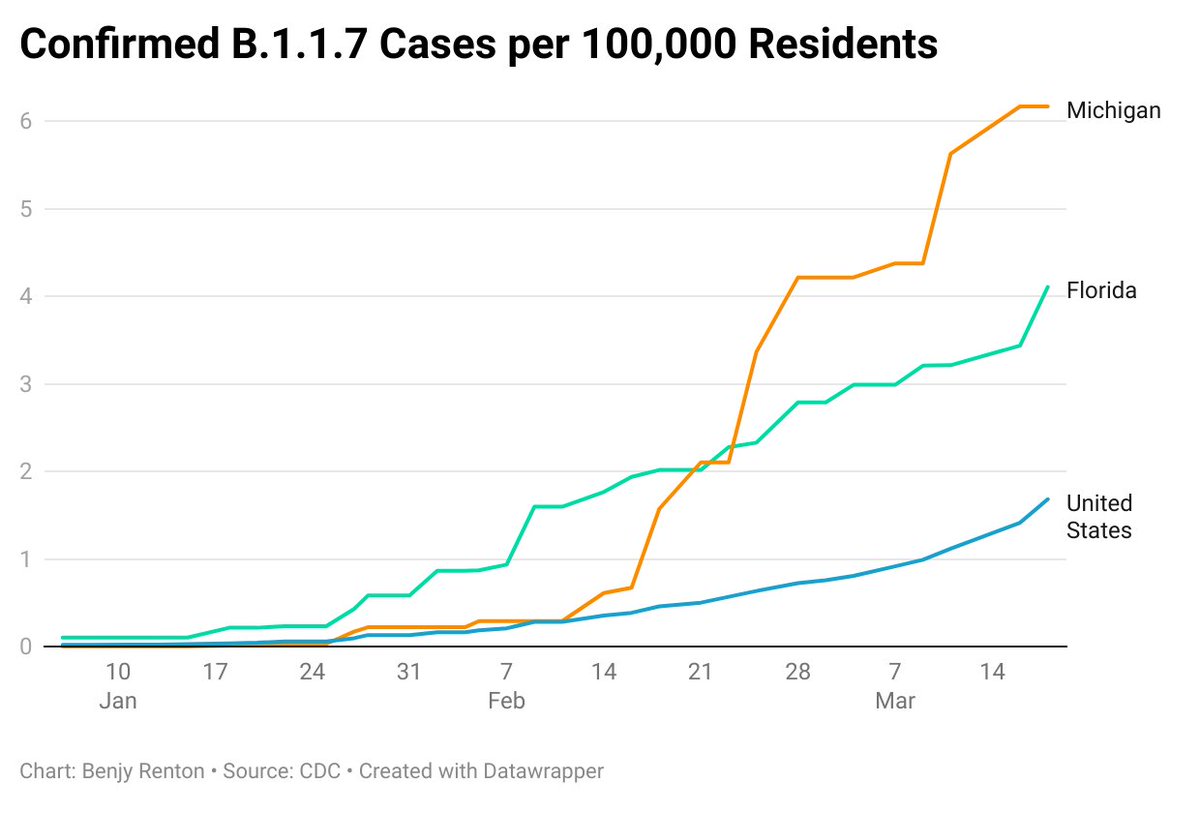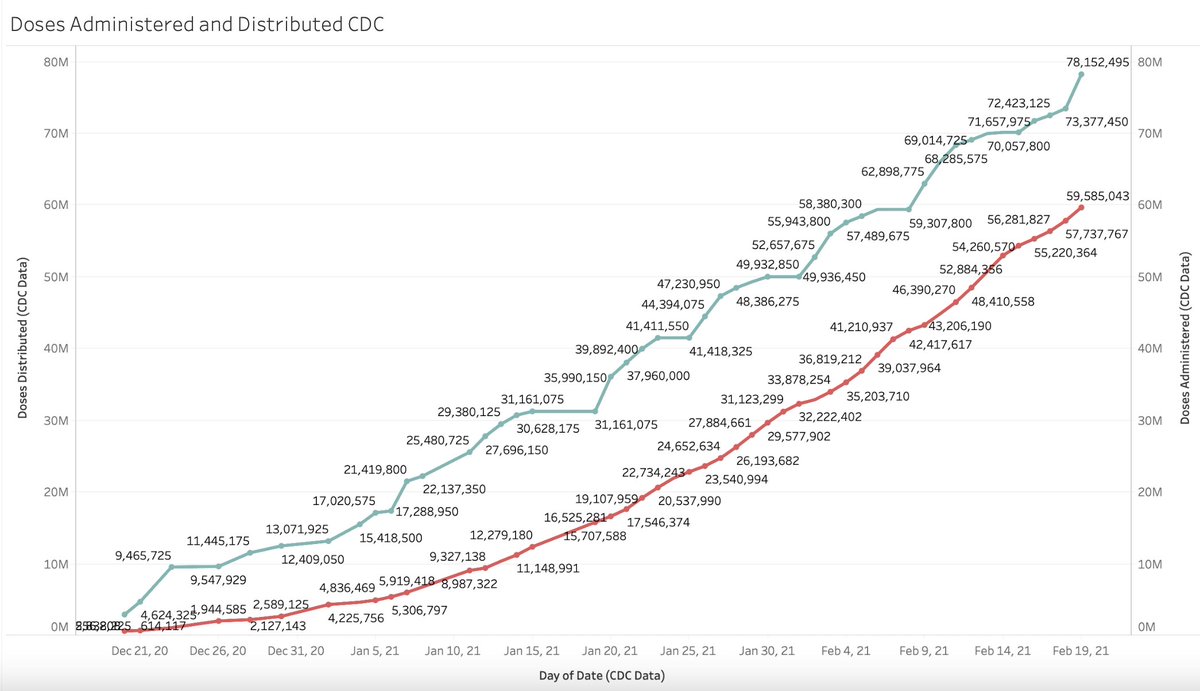
It ain't over till it's over. While cases throughout much of the country have continued to decline, Michigan has seen an increase in new cases and hospitalizations. This could point to the effects of variants in a largely unvaccinated population. Thread:
covidtracking.com/analysis-updat…
covidtracking.com/analysis-updat…
First, let's show how we got here. The increase in cases may be attributed to not only pandemic fatigue, but also policy that opened indoor dining to 25% (February 1) and 50% capacity (March 5). This was after largely successful policy in November.

https://twitter.com/bhrenton/status/1328161510087151621
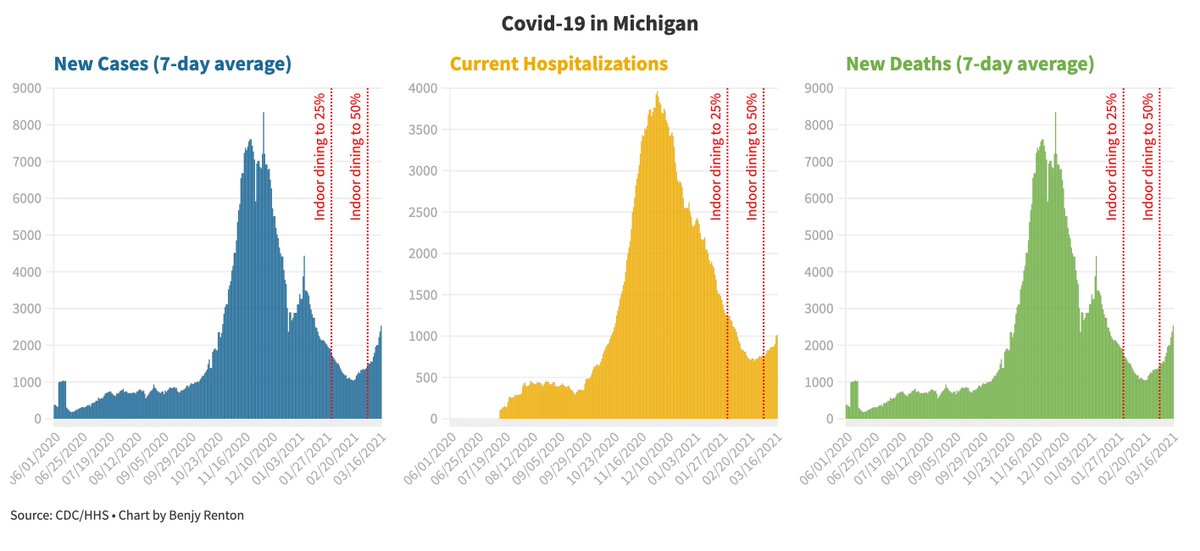
Enter variants. The B.1.1.7 variant has been increasing in prevalence in Michigan, now estimated to be 60% of cases — higher than Florida, according to Helix data (graphic credit @EricTopol). Michigan may be the bellwether state on this variant.
helix.com/pages/helix-co…
helix.com/pages/helix-co…
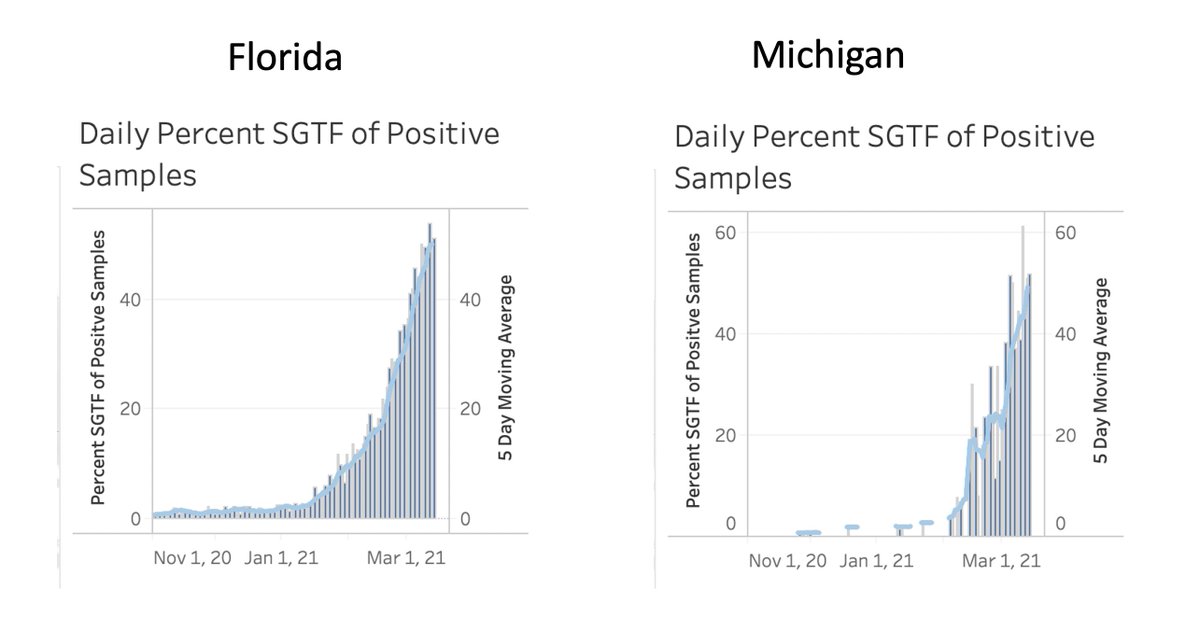
According to sequencing data from the CDC, Michigan has the highest number of confirmed B.1.1.7 cases per capita. 

You may also remember that this variant was spreading on the University of Michigan's campus in mid-February.
michigandaily.com/section/news-b…
michigandaily.com/section/news-b…
We knew the variants were going to spread. The issue is Michigan's pace of vaccinations is much lower than any other states, and the variant will continue to spread in Detroit and move to more rural areas. Here is how Michigan compared to neighboring states on vaccination. 

The latest CDC data also show that Michigan has been slow to deploy the Johnson & Johnson vaccine, though these numbers may be affected by a reporting lag. 
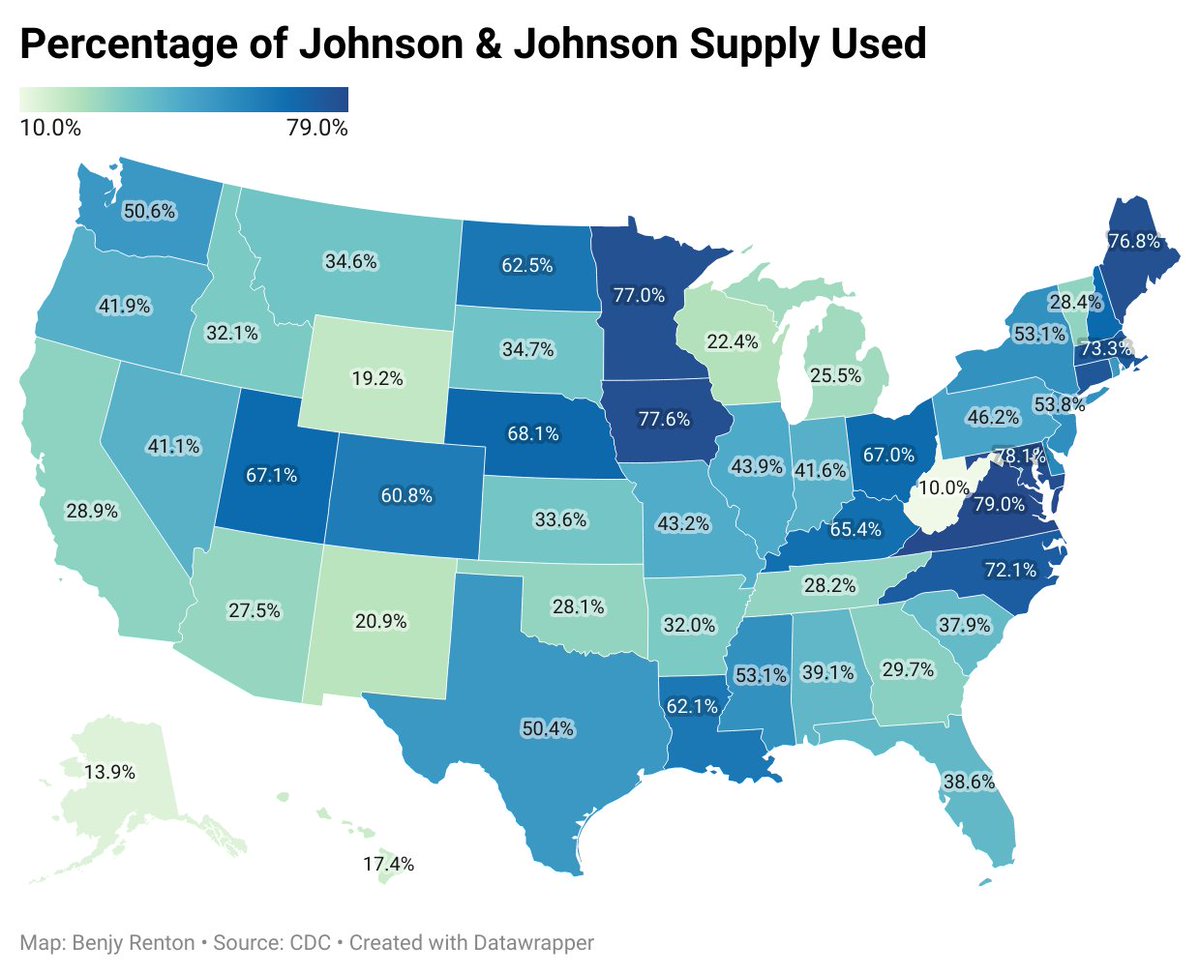
When it comes to vaccinations, Michigan ranks:
- 37th in doses administered per capita
- 34th in the percentage of the population with at least 1 dose
- 32nd in the percentage of the population fully vaccinated
- 28th in 65+ with at least 1 dose (most vulnerable)



- 37th in doses administered per capita
- 34th in the percentage of the population with at least 1 dose
- 32nd in the percentage of the population fully vaccinated
- 28th in 65+ with at least 1 dose (most vulnerable)
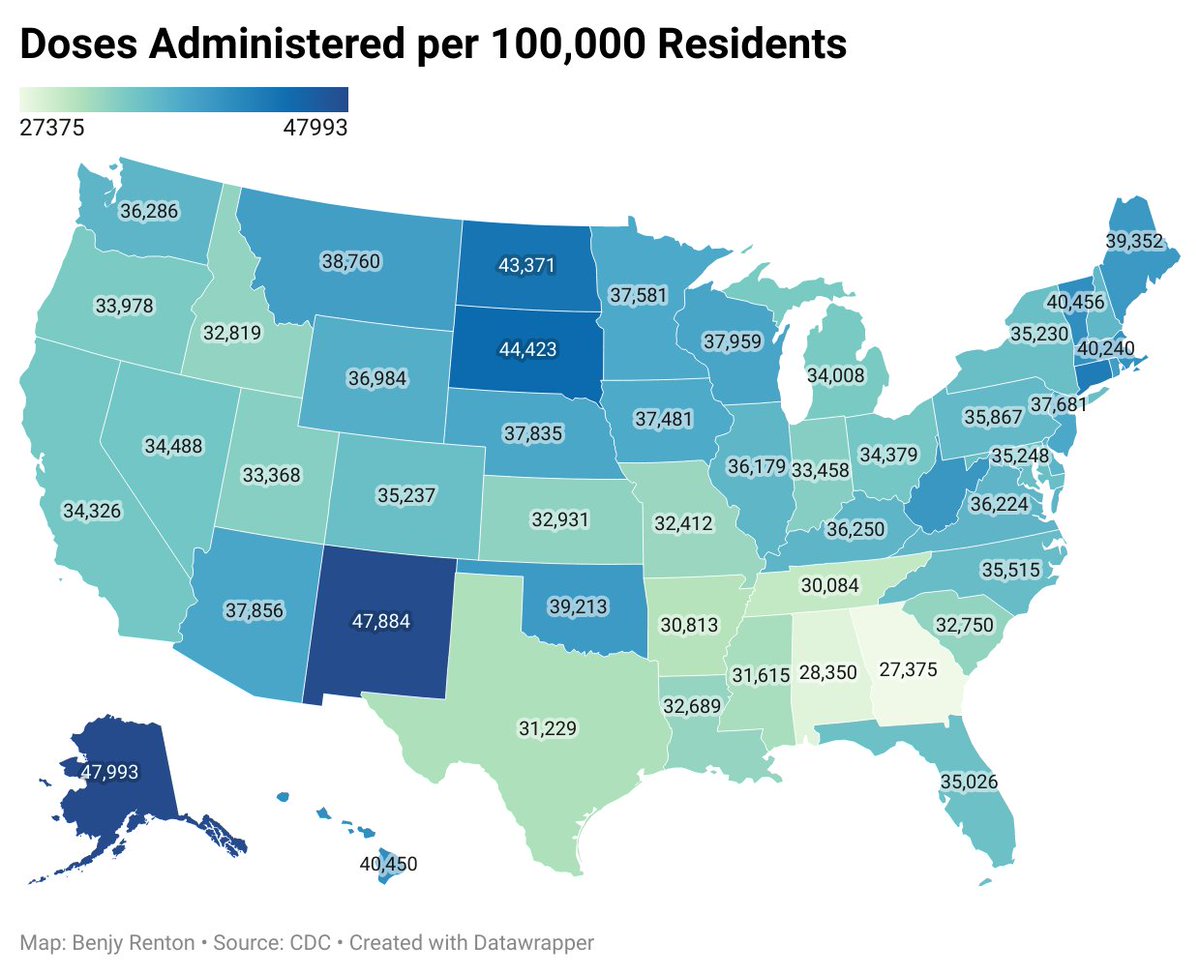



Additionally, Michigan's daily pace of vaccination (red) continues to lag behind other neighboring states, such as Illinois (brown), Minnesota (pink) and Wisconsin (yellow). 
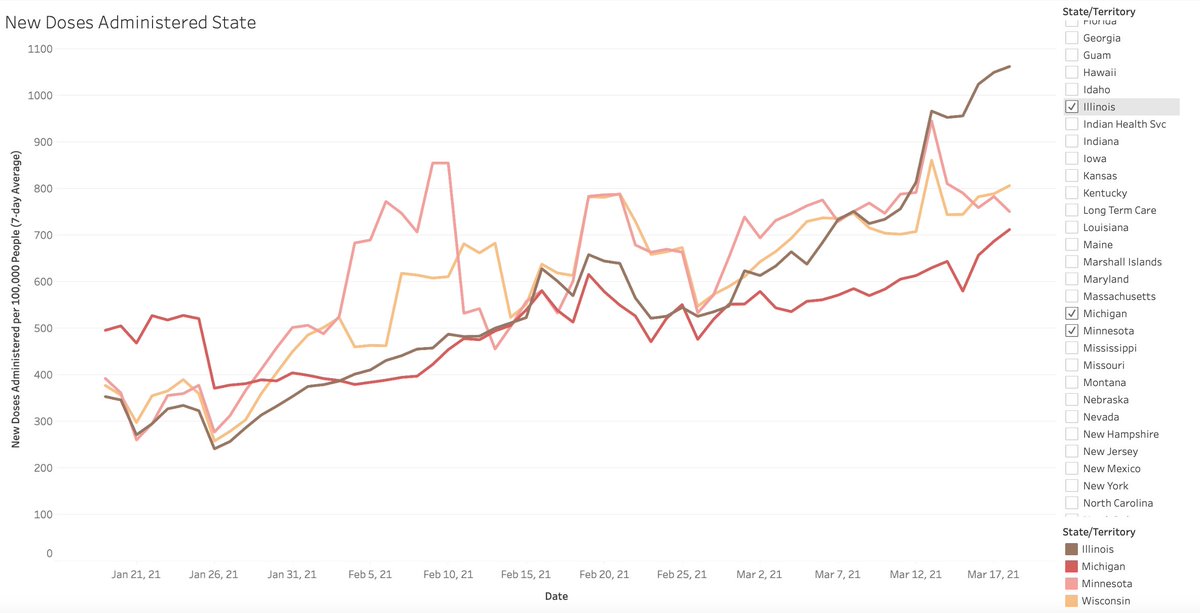
It is great that Michigan has opened Ford Field as a federally-supported mass vaccination site and will open vaccinations to all adults on April 5. However, between now and then, the state should focus on accelerating vaccinations. Every shot counts.
theatlantic.com/health/archive…
theatlantic.com/health/archive…
As @ashishkjha notes, national data often misses underlying state trends, and an outbreak in Michigan will quickly become a regional one without mitigation. Now is not the time to be relaxing measures — we need to continue vaccinating the most vulnerable.
https://twitter.com/ashishkjha/status/1372381193816178689
One final note: Thanks to Michigan's Department of Health and Human Services for providing such a detailed vaccine dashboard.
michigan.gov/coronavirus/0,…
michigan.gov/coronavirus/0,…
Another final note: A recent U.S. Census Bureau survey showed that Michigan had vaccine enthusiasm rates that were in the middle of the pack when compared to other states. Emphasis must be placed on encouraging vaccine uptake and reaching vulnerable populations. 

• • •
Missing some Tweet in this thread? You can try to
force a refresh
